| Safe guarding our pets | | | Winter ailments are a hot topic as we have chilly nights- lameness, agitation, weight loss and mobility concerns are common complaints we are seeing coming in through our doors.
If arthritis injections usually help your pet, don't forget to book in regularly with our nurses for top ups! You can also Click and Collect medications for our pets on regular long term medications. Together, we can help your pet get through winter in tip top shape! | | | Book Online |
|
|
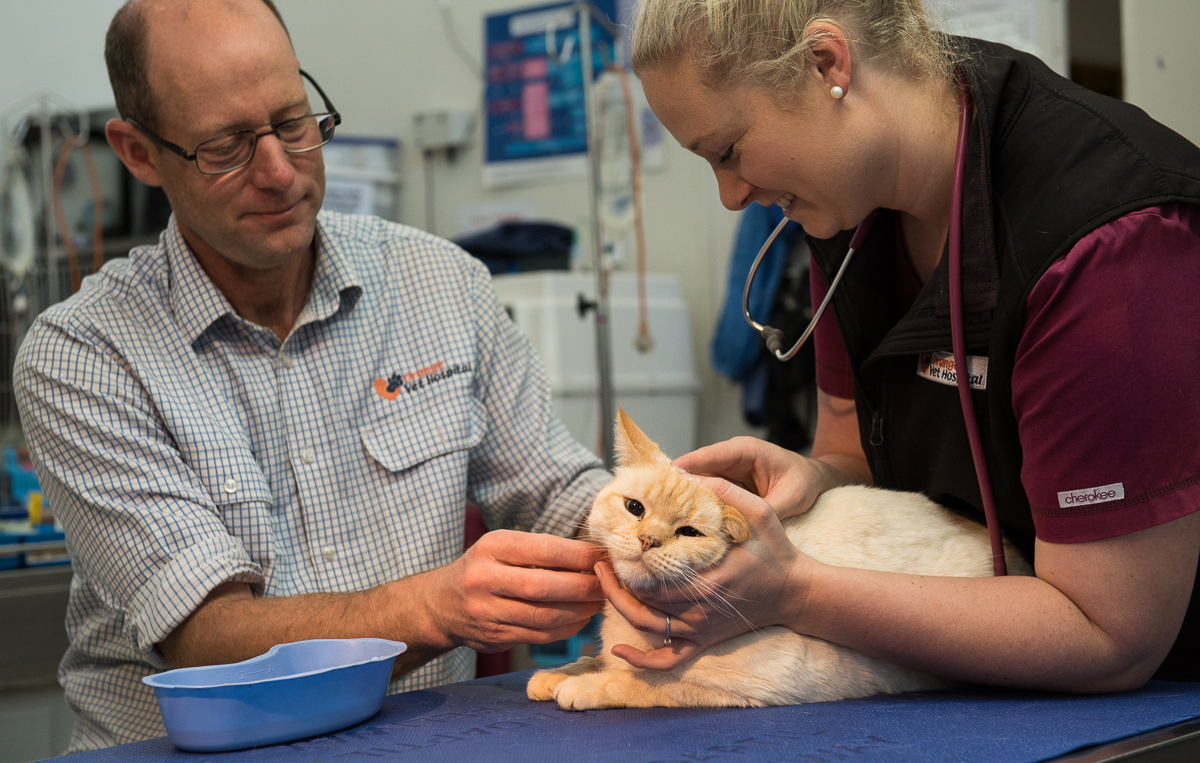 | | A thorough investigation | | | One question we often get asked is if your pet is aged eight or older and seems generally healthy, do they need annual blood and urine tests and blood pressure checks?
The short answer is Yes; but here are three reasons why performing these tests routinely in older pets is a good idea:
1. Blood and urine tests can lead to the earlier detection of health problems and better outcomes for the pet
Whilst physical examination is an excellent way of checking the general condition of an older pet, it doesn’t always tell us about more subtle internal health issues.
For example, let’s consider chronic kidney disease (CKD), estimated to occur in 30-40% of cats over ten years of age.
Vets grade the progression of CKD in affected cats in four stages, with Stage 1 being mild disease and Stage 4 being severe disease. In cats with Stage 1-2 disease, obvious external symptoms of unwellness are usually mild or absent. However, blood and urine tests can detect these earlier stages of CKD, and scientific studies have shown that diagnosis and management of CKD in early stages often leads to a longer survival time for the pet (and usually better quality of life for the pet during that time too).
2. High blood pressure can be a “silent” danger
High blood pressure in pets commonly occurs secondary to other health conditions, such as an overactive thyroid in cats or Cushing’s disease (overactive adrenal function) in dogs. Still, it is often not detectable on routine physical examination alone. Unfortunately, significantly elevated blood pressure causes damage to other organs, such as the kidneys, heart and brain. It can lead to sudden blindness due to retinal damage. Blood pressure for pets gets measured in much the same way as it does for you at the doctor's office- with a blood pressure cuff getting blown up and down. This is not painful and is done with minimal fuss.
3. It’s always helpful to know about your pet’s general organ health
When pets get injured and require an urgent procedure or surgery, it’s good to have up-to-date blood tests to tell us about their recent organ health so we can proceed as safely as possible. For many older pets on regular medication, it is also important to check that the medication is working as expected (for example, thyroid medications) and that there are not unsafe side effects developing (for example, with some anti-inflammatories). Our modern options mean that usually, if one particular medication is not working as we want it to, there are often other options available.
For more advice on keeping your older pet in tip-top health, consult our helpful team. |
|
|
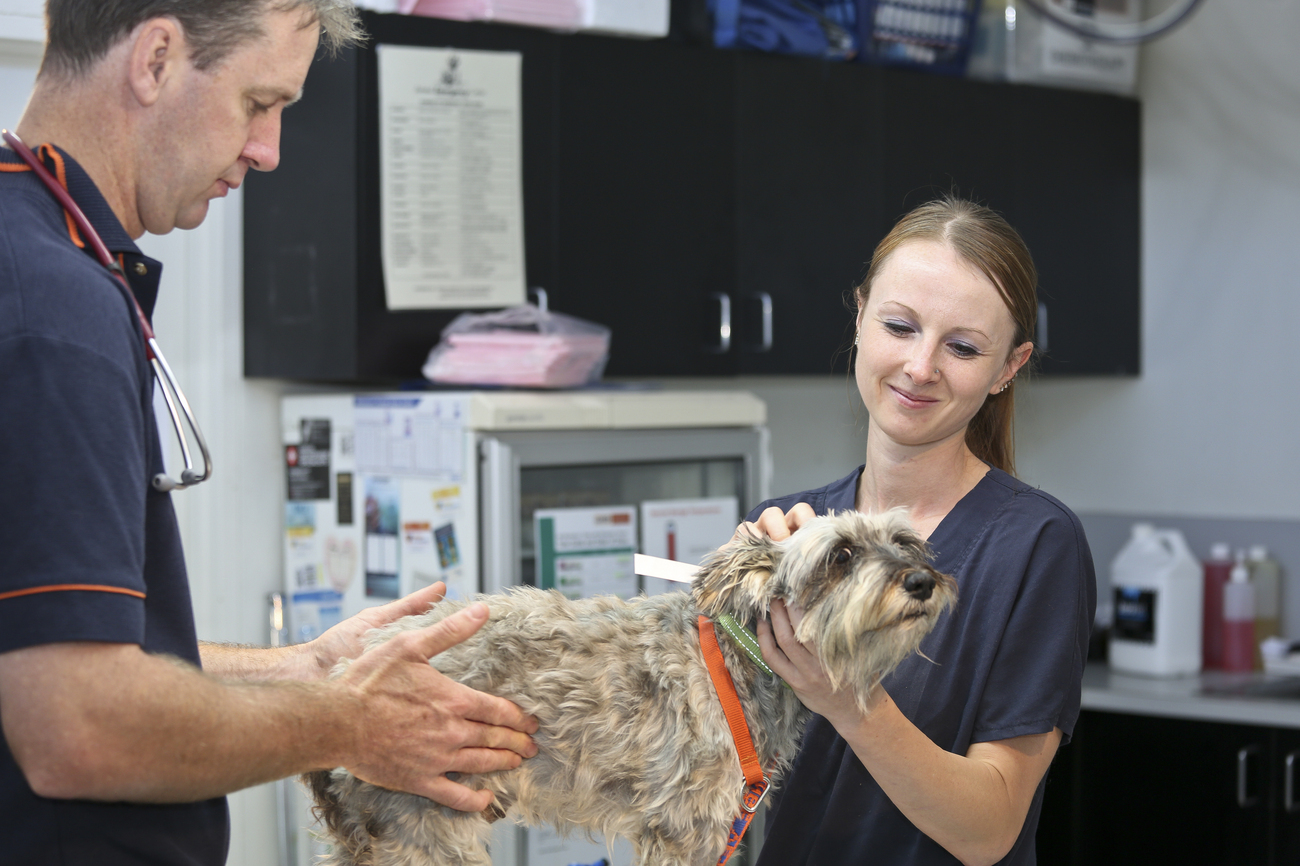 | | Let's get physical! | | | We cannot understate the importance of a good physical examination for assessing your older pet's general health, comfort and condition! Whilst every pet gets a nose-to-tail assessment, here are the four things we focus on when examining a middle-aged to older pet:
Dental Health
Unfortunately, dental disease can affect not only your pet's quality of life and comfort but also their general organ health. To assess your pet's dental health, we get to smell their breath (not our favourite job, admittedly!), palpate around their face and jaw, and then assess their mouth for any gum swelling or inflammation, brown calculus build-up, exposed tooth roots, or fractured or missing teeth. Sometimes oral masses are found, or other pathology around the mouth. With the rise and rise of short snouted dogs, including Cavaliers, Chihuahua, and French Bulldogs, we are seeing the same number of teeth crammed into smaller faces. All of this crowding makes for much more significant dental disease.
Heart health
With mitral valve disease (one of the most common heart problems seen in dogs) occurring mainly in middle-aged to older pets, we are particularly vigilant about checking the hearts of older pets. We will count the pet's heart and pulse rate and assess the sounds and rhythm of their heart for any abnormalities. Things that you can do at home is monitor your pet's breathing rate at two very specific times for us:
- During exercise and the recovery period
- While your pet is asleep
Taking advantage of modern tools, try taking a short, 15 second video of your pet at these times to show your vet at your next appointment, especially if you are concerned.
Joint comfort
Arthritis is widespread in older pets due to general wear and tear . We also see it in younger to middle-aged pets who have suffered from a previous joint injury, orthopaedic surgery or developmental problem (such as hip dysplasia). As part of your pet's physical examination, we will check their general mobility and assess their joints' comfort and range of motion. We will also check for any muscle loss or neurological dysfunction that could suggest a particular area's reduced function.
Lump checks
Unfortunately, older pets are more likely to develop lumps and bumps, some of which may be a worry and require prompt treatment. We'll check in your pet's skin and feel over their body (including examining their lymph nodes), but it helps if you can show us any lumps you may have felt while patting your pet, too. For smaller lumps, shaving may be worthwhile. If it is tricky to find a particular lump, using a highlighter to circle the area can be useful ahead of your vet appointment so everyone can get to the root of the concern.
With a thorough hands-on assessment, our vets can handle your pet's general health and condition with care! |
|
|
 | | A bad case of the wobbles | | | One of the more common emergencies we see in older dogs is the sudden onset of generalised wobbliness due to a condition called idiopathic vestibular disease (IVD). These acronyms get tricky- IVD is different to IVDD- also known as InterVertebral Disc Disease. Here’s what to watch out for in your more senior pets:
What is IVD?
Idiopathic vestibular disease involves a sudden disruption of the regular internal balancing system, leading to wobbliness, falling or rolling over, a head tilt and regular “ticking” eye movements (nystagmus). Unfortunately, the exact cause of the condition is unclear. Some theories postulate that it may be the doggy equivalent of a stroke, or more correctly known as a transient ischemic event (TIE- are you tired of the acronyms yet?)/
How do we diagnose IVD?
IVD is often strongly suspected based on the sudden development of wobbliness, a head tilt and nystagmus in an older pet. However, because other health issues can cause similar symptoms, vets should perform additional testing to help confirm our suspicions, starting with a complete physical examination of your pet. As part of this examination, we will check your pet’s ears and test their brain and nerve functions. Any unexpected abnormalities in their movement or reflexes could suggest a different brain or spinal disease, whilst a visible ear infection could suggest a middle or inner ear problem as the cause of their wobbliness.
We may also suggest blood tests to ensure your pet isn’t suffering from other organ diseases - especially if your pet hasn’t undergone a blood test for some time. Some other diseases can look similar, or even compound the difficulties faced with IVD, for example, kidney disease and infections.
Can IVD be treated?
There is no one specific treatment for IVD, but the good news is that most pets will recover with good supportive care. Our vets can prescribe anti-nausea medications to ease your pet’s discomfort and advise on how to best nurse them, including assistance with feeding, keeping them hydrated, aiding them with toileting, and keeping them comfortable and clean on padded bedding. Some patients may benefit from muscle relaxants, or even mild sedation.
If you have concerns about your older pet’s mobility or comfort, contact our steady team for a helping hand! Remember, we are available after hours if emergencies arise. |
|
|
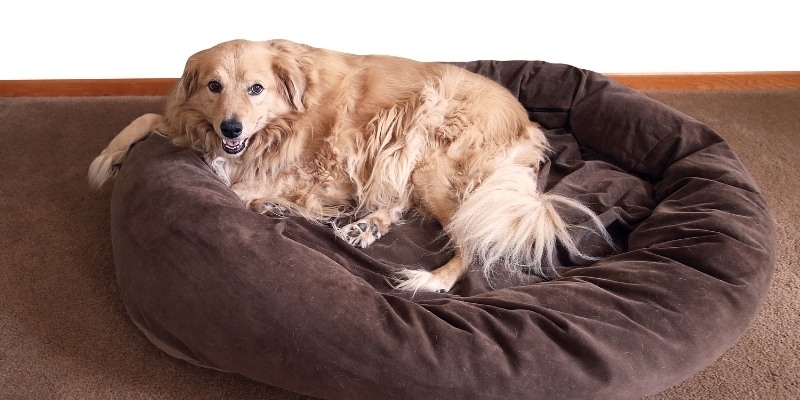 | | Six “home comforts” for old pets | | | As well as planning for 6-12 monthly veterinary check-ups (so we can manage any developing health issues), you can help support the health of pets aged eight years and older on a day-to-basis too!
Our senior-savvy team have compiled a list of five simple aids to keep your pet feeling comfortable and sprightly in their home environment:
Night lights
Older pets commonly develop a condition called nuclear sclerosis, where their eyes gradually become cloudy due to natural age-related degeneration (note- nuclear sclerosis isn’t the only cause of cloudy eyes, so always consult your veterinarian to confirm).
Nuclear sclerosis isn’t harmful but can reduce your pet’s vision in dim lighting. Purchasing motion-activated night lights and placing them around your pet’s sleeping area, water bowls, and along the route to their toileting location can help them to navigate more confidently.
Non-slip matting
Due to joint issues and reduced strength and coordination, older dogs can find walking on slippery floors difficult or even scary! Suppose your pet is showing hesitance on smooth floors. In that case, we’d recommend purchasing cheap non-slip matting to make safe walking tracks along their standard routes.
If matting isn't working for the humans in the household, extra grips can be added to the toenails of the dogs, like nail extensions, to give better grip for dogs navigating the home environment.
Non-slip ramps
Many older cats and dogs suffer from chronic hip or back discomfort, making it harder for them to jump up for snuggles with their favourite person (you!). Fortunately, we have many great options for medications to make pain more manageable. As extra assistance, non-slip ramps and stairs can help pets safely get on and off higher resting surfaces and help dogs get in and out of the car.
Raised bowls
Many older large-breed pets appreciate not having to lean right down to eat and drink. You can purchase fancy raised bowls, or go DIY with sturdy boxes or pavers.
Thick bedding
Who doesn’t love a soft, supportive bed? Thick bedding (such as memory foam) will be extra kind to your pet’s old joints and bones, helping them to feel more mobile and comfortable. Be sure to have the bed in a warm, draught-free spot so that breezes aren't chilling your pet. Orange weather isn't the nicest on old sets of bones!
Get tech savvy!
Let's take advantage of living in 2023! Did you know that you can buy dog and cat beds that are electric heated? Now, you can even get battery pack heated pet jackets! This can be a fantastic, efficient way to warm your pet, but just be cautious about outdoor wearing (they can get very heavy when wet), and caution around little puppy teeth; electrics and puppies can cause nasty electric shocks.
For more tips on senior health support, contact our old pet-friendly team. If pain is slowing down your pet, we have some great new options for either daily medications or monthly pain injections for both dogs and cats. |
|
|
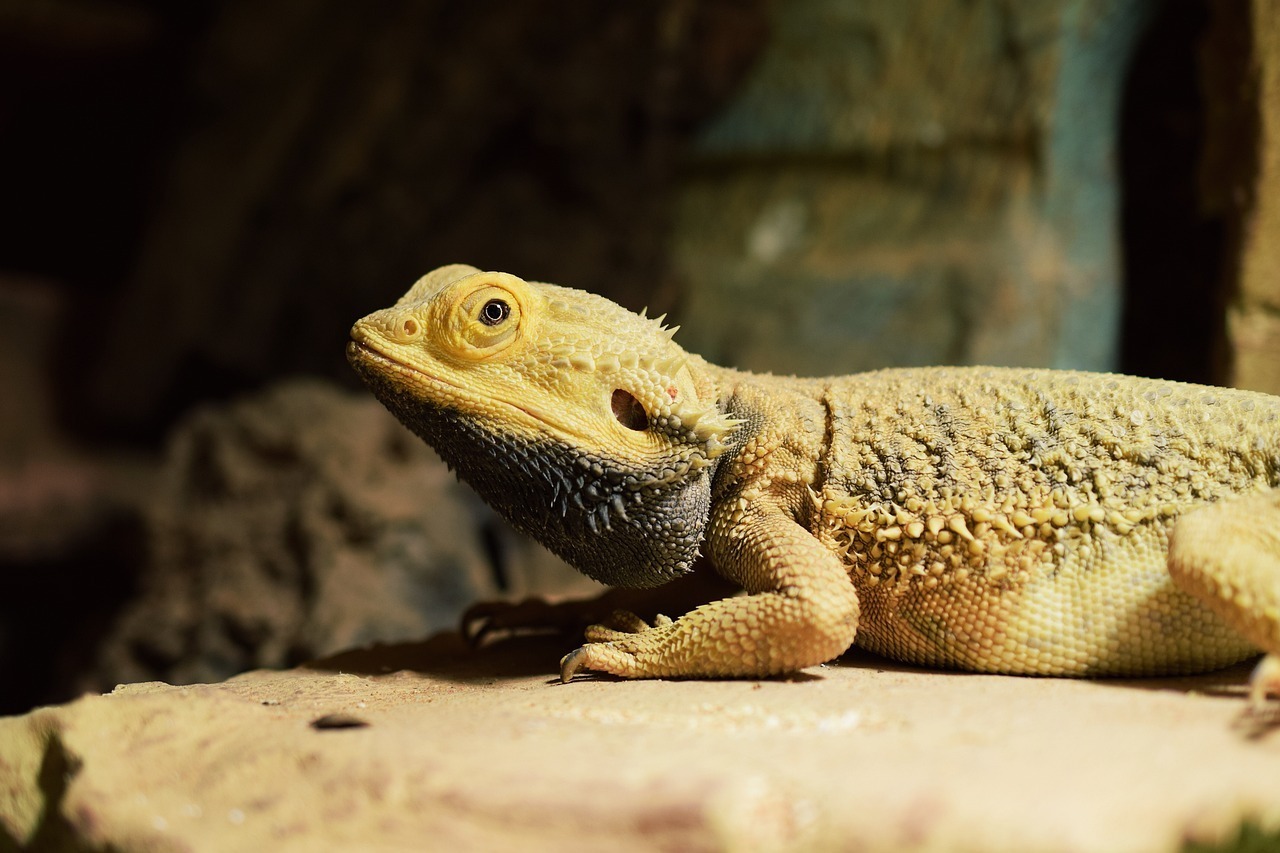 | | When is warmth too much of a good thing? | | | If you drive around Ophir or Canobolas, you might notice that reptiles in the wild are either hiding or sluggishly slow. Reptiles, including snakes and lizards, are cold blooded. This means that when the weather cools down, so too does their metabolic rate.
Things change when we have pet reptiles in captivity. Often we are helping them to have access to all of the things that they need for life, including food, and warmth. We can to be careful to moderate these essential needs. Like a kid at a buffet, our cold-blooded pets can have a hard time self-regulating when enough is enough.
Now is a great time to check your reptile's enclosure and make adjustments as needed. Check that the enclosure has a gradient of temperature- cool in one spot and warm in another. The temperatures should run up to your reptile's preferred body temperature (PBT). Check that the warmth can't get too much- in winter, cold animals may be tempted to sit on hot rocks in particular, and end up with devastating burn injuries. While most species will live without UV light, they live a better life with UV light. UV lights should be checked monthly, or replaced every 6months, to optimise health. Raw sunshine. without glass to filter it, is another safe and effective way to UV prime your reptile. Harnessed walks or carried strolls are also a great opportunity for enrichment. Humidity in the enclosure is another key point and helps with skin health and shedding.
With all of this sluggishness, many reptiles will do the reptile equivalent of hibernation, also known as brumation. Don't be surprised if there is little eating or drinking at this time, but do check that the environment is favourable.
If you need to check the requirements of your particular reptile, there are good resources online and via our colleagues at SERV (link below). If you bring your reptile to the clinic, please make sure it is safely contained to protect the nerves of other clients in the waiting room!
|
|
|
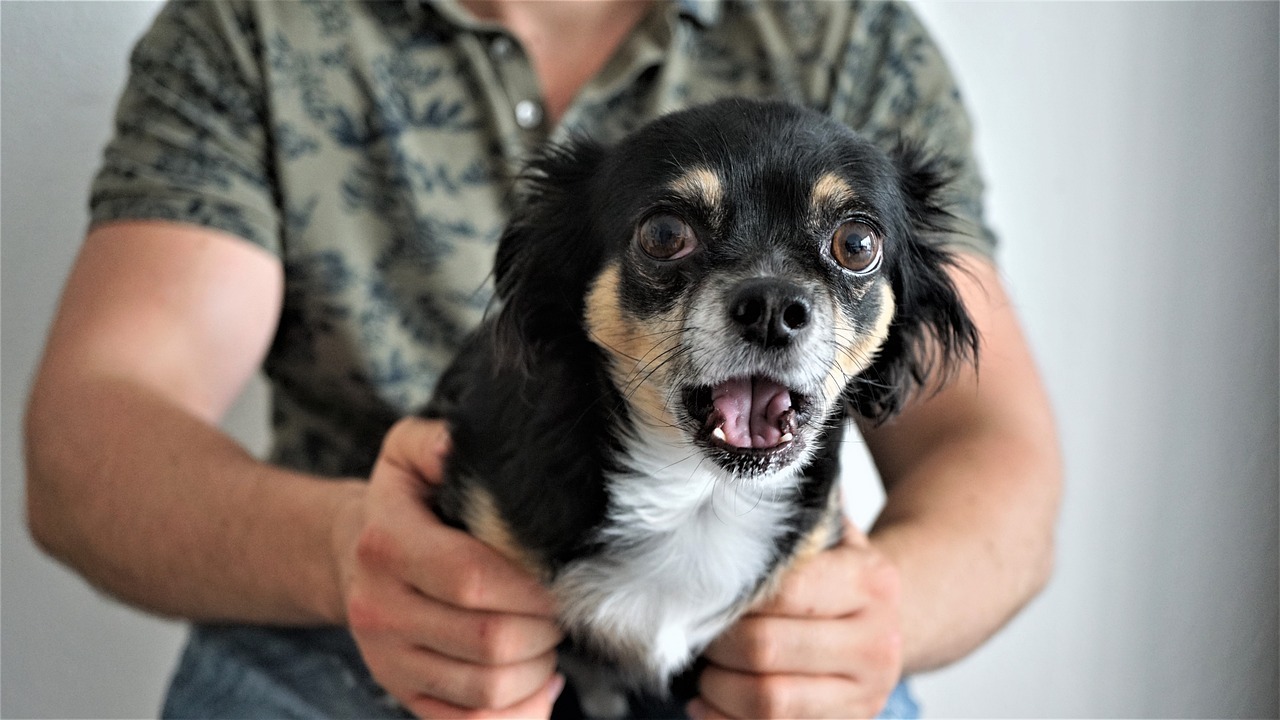 | | A perspective on panic disorder | | | Seeing your pet embark on a profound set of manic, self destructive or escape behaviours is extremely confronting, and one of the worst things about having a pet with a panic disorder is the feeling of how little you can do in the moment. Panic disorders are extreme in the emotions of the pet in the moment, and extreme in the damage that can be caused to the pet, to property, and even to other pets or people as bystanders.
Panic disorder is typically associated with something happening in the environment that is beyond the pet’s control- things like thunder, lawn mowers, fireworks, and even being left alone can all be sufficient to trigger panic in some animals, even though none of these things rationally are likely to harm a pet. Animals that have shown panic episodes previously are much more likely to have subsequent episodes of panic.
Things you might see in a panic episode include uncontrolled toileting, drooling, pacing, vocalisation and escaping. Noise sensitivity, as can be common in working breeds such as Border Collies, may make panic disorders more likely. ‘Too much love’ or spoiling dogs does not cause panic disorders.
Fortunately, most patients with panic disorder can be helped. A combination of environmental modification, training, massage and medications can make a big difference. Some people have had great success with Thundershirts, and the newer Thundercaps. Earlier intervention has better success than waiting until an ultimatum has been reached, as repeated exposure and repeated panic reinforces the behaviour, much like forming a habit. Of course, underlying medical problems should be ruled out or managed, as pain and other health problems can make panic much, much worse.
If you are worried that panic disorder may be affecting your pet, arrange a behavioural appointment so we can help you as best as possible. Click the image above for information about dog behaviour from the makers of Thundershirts.
|
|
|
| Slip of the mind? | | | Canine cognitive dysfunction syndrome is something that can affect up to 1 in 3 dogs over years of age, but something seldom noted on booking appointments. Things you should watch for your pet and book appointments accordingly:
- Loss of toilet training for a toilet trained pet
- Not recognising family members any more
- Disorientation
- Pacing, circling or chewing
- Increased anxiety
- Getting agitated or vocal, especially in the evenings or at night
The recent colder weather can see signs exacerbated as old dog brains struggle to keep up.
Purina has an assessment tool freely available on their website (button below) that might help you discuss this topic with your veterinarian. | | | Behaviour assessment tool |
|
|
| Dental drama? | | | August is dental month at OVH and we have some great incentives to look after your pet's teeth.
* Reduced dental prices
* Half price dental x-rays
Did you know that we can x-ray your pet's teeth, just like your dentist can x-ray your teeth? As pets aren't quite as good at saying 'ahhhh', we need to have pet's safely anaesthetised to make this work. | | | Dental advice from the AVA |
|
|
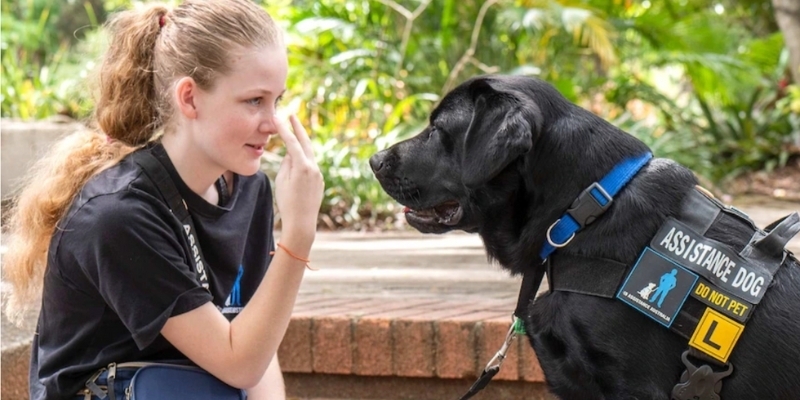 | | Animal News In Brief | | | Benefits to the autism community as assistance dogs increasingly take on more significant societal roles.
Meet Onyx, a two-year-old black labrador and a certified assistance dog to a 13-year-old Bundaberg local and young autistic woman, Summer Farrelly. Since many autistic people experience heightened sensory awareness and rapidly process overwhelming amounts of sensory information that often leads to physical and emotional exhaustion, having a certified support animal can be hugely helpful. "What [Onyx] does is he can identify my emotions before I identify them, which means he can tell me how I'm feeling, so I can regulate myself better, and from that information, I can work out whether I need to leave or if I'm doing too much," said Ms Farrelly. Not only is Onyx a fantastic regulator of Summer's emotions, but he’s also just as good at helping her regulate her screen time! "When I go to bed with any sort of device, he will bark until I put the device down because he wants me to close my eyes and sleep," she said. Canine explosives detection handler turned assistance dog trainer Claire Turner was responsible for placing Onyx with Summer and has become Summer's mentor in animal handling. "We work a lot with older people, but my passion with canine assistance is to mentor the next generation," said Ms Turner. "Summer and this age group are the future. If they are starting to find self-care through assistance dogs and they get on top of it, society will be a better place."
Read the ABC News article to find out more about Summer, Onyx and the assistance dog program.
Photo credit: ABC Wide Bay: Brad Marsellos
Pet owners pay $15,000 for designer dogs
Designer bags and shoes have long been a luxury status symbol accessible to only the wealthy. Still, designer dogs are fast becoming an accessory to many families, and they’re just as expensive and sought-after. Indeed, since the coronavirus pandemic, would-be dog owners around Australia are forking out 'Oodles' of money for Groodles, Spoodles and Cavoodles. Demand is so high that the number of applicants on many breeder waiting lists has grown into the hundreds. Amanda Wilkinson is a South Australian Groodle (poodle and golden retriever cross) breeder. She believes the sharp rise in the cost of puppies is partly due to opportunistic breeders and buyers willing to pay any price. "We have seen the prices go from $3,500, which is standard, to $7,500, to the $15,000 mark," she said. "Whilst breeders are at fault for charging those prices, so are the consumers for paying it — if people weren't paying $7,000 for a dog, they wouldn't be charging it." 'Oodle' breeds have increased in popularity due to their charming, lovely nature and obvious cuteness. But does this sharp rise in rates suggest that some breeders are more concerned about their hip pocket than the safety and suitability of the homes they place puppies into? "They are a beautiful breed of dog… but… the families that the puppy is going to should override this ridiculous price that people are asking," said Ms Wilkinson. For our two cents, we think what's most important for any dog, 'designer' or bitzer, is that it's well looked after and loved. As the singer Kinky Freidman once said, "Money can buy you a fine dog, but only love can make him wag his tail."
Click here to read ABC News article about the price of designer dogs
Dog digs to safety after 60 hours trapped underground
For most people, digging themselves into a hole they can't escape from is just a turn of phrase for an awkward or unfortunate social situation. Luckily for ''Bear'' the Cavapoo, who found himself trapped underground in Aberdeen in a literal hole for around 60 hours, digging his way out was no problem - even on an empty stomach! Bear went missing midway through a rambling walk through Seaton Park with his owner Dasha Samatonia. Ms Samatonia had been on holiday with a friend and their dog ''Lulu'', however the holiday worsened when the two dogs wandered away, but only Lulu returned. Local townsfolk, business owners and the fire bridge joined the search for Bear. Still, Lulu would ultimately lead the group back to his location - down a hole in an abandoned site. "She was very persistent in going down the hole," said Ms Samatoina, "The thought of him being down there in the cold and dark terrified me. I think he was a few feet down because his bark was quite muffled." Encouraged by the sound of Ms Samatonia's voice calling out to him, Bear managed to dig his way up, out and into her arms. Safely above ground, Bear was taken straight to the vet for a quick check-up, where he received treatment for dehydration, sandy eyes and a few scratches on his nose, but was otherwise healthy. "It is amazing how strong he is to dig himself out after three days with no food or water," said Ms Samatonia.
Read the BBC news article and dig deeper into the details of Bear’s story. |
|
|
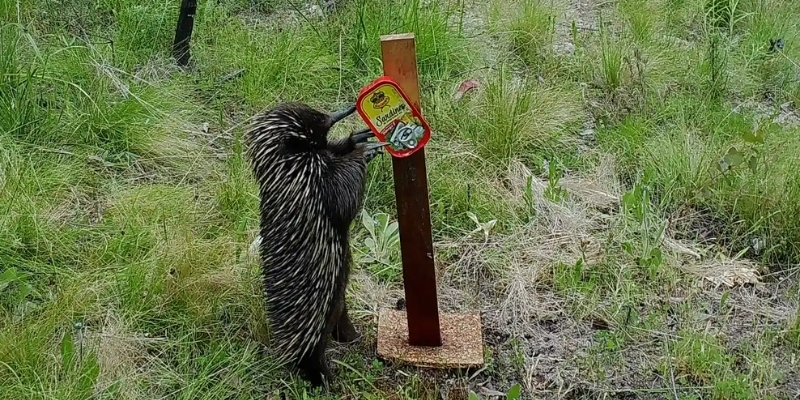 | | Life after bushfires - moving images as Australian animals rebuild | | | Google artificial intelligence (AI) technology is helping researchers learn more about Australian wildlife behaviour. The World Wildlife Fund's 'Australia's Eyes on Recovery Program' aims to collect intelligence in the areas most ravaged by bushfires in recent years to allow conservationists to better understand how the wildlife population is recovering.
The AI, called 'Wildlife Insights', can recognise over 150 Australian animals with more than 90% accuracy and has already analysed seven million photos from 1100 sensor-activated cameras dotted across bushfire-affected areas.
Not only are the insights provided by the study valuable for the WWF researchers, but as a side result, they're also adorable. Pictures published range from rare echidnas, kangaroos and dingoes in Victoria, a wombat with her joey in New South Wales, to koalas in Queensland and even a wedge-tailed eagle peering, selfie-like, down the barrel of a camera in Kangaroo Island! However, the cameras also picked up multiple pictures of feral species, including cats, foxes, pigs, and cane toads. "What we're really hoping for is that these results can help to inform future fire events, which we will expect to get a lot more of due to climate change," said Dr Emma Spencer, coordinator of the research program. "We've had three years of heavy rainfall, and in some cases, we've actually seen big booms of animals because of that. We've also seen huge growth of vegetation, which means higher bushfire risk – potentially this summer," said Ms Spencer.
Click here to catch up on The Guardian’s coverage of the Australia’s Eyes on Recover Program.
Photo credit: World Wildlife Fund
|
|
|
This email contains comments of a general nature only and is not intended to be a substitute for professional veterinary advice. It should not be relied on as the basis for whether you do or don't do anything.
All content © PetPack 2022 |
|
|
This email was sent to:
email@example.com
Orange Veterinary Hospital
57 Molong Rd
Orange, NSW 2800
|
|
|
|